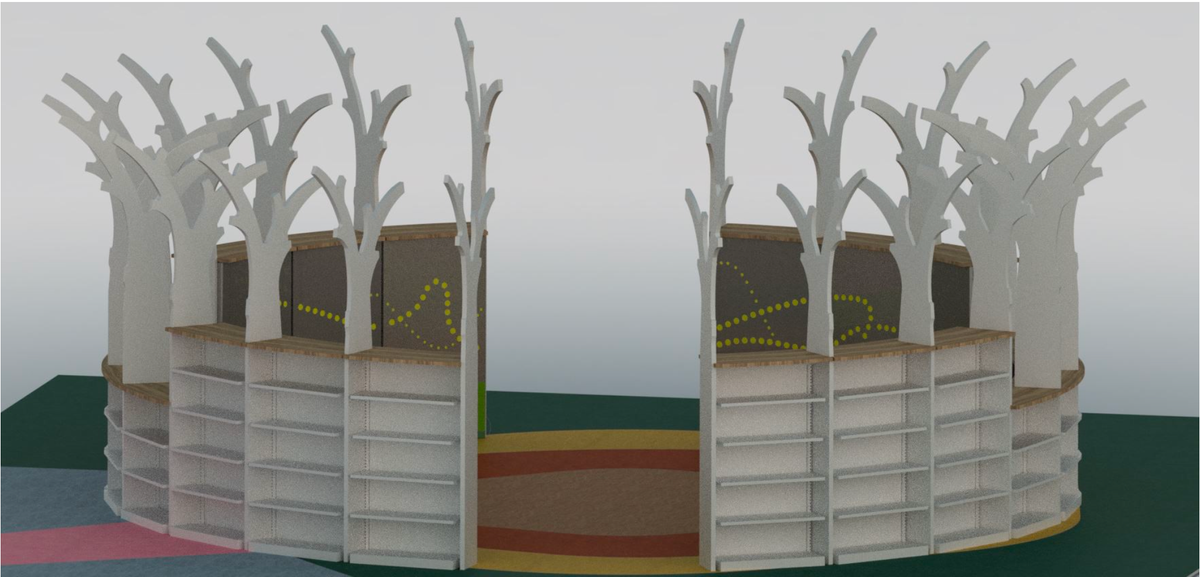Between this life and the next: works by Jerome Tiger at the Mid-America All-Indian Museum
Seven works by the Mvskogee Creek-Seminole artist convey the mastery he achieved in his brief career. The works will be on view through November.
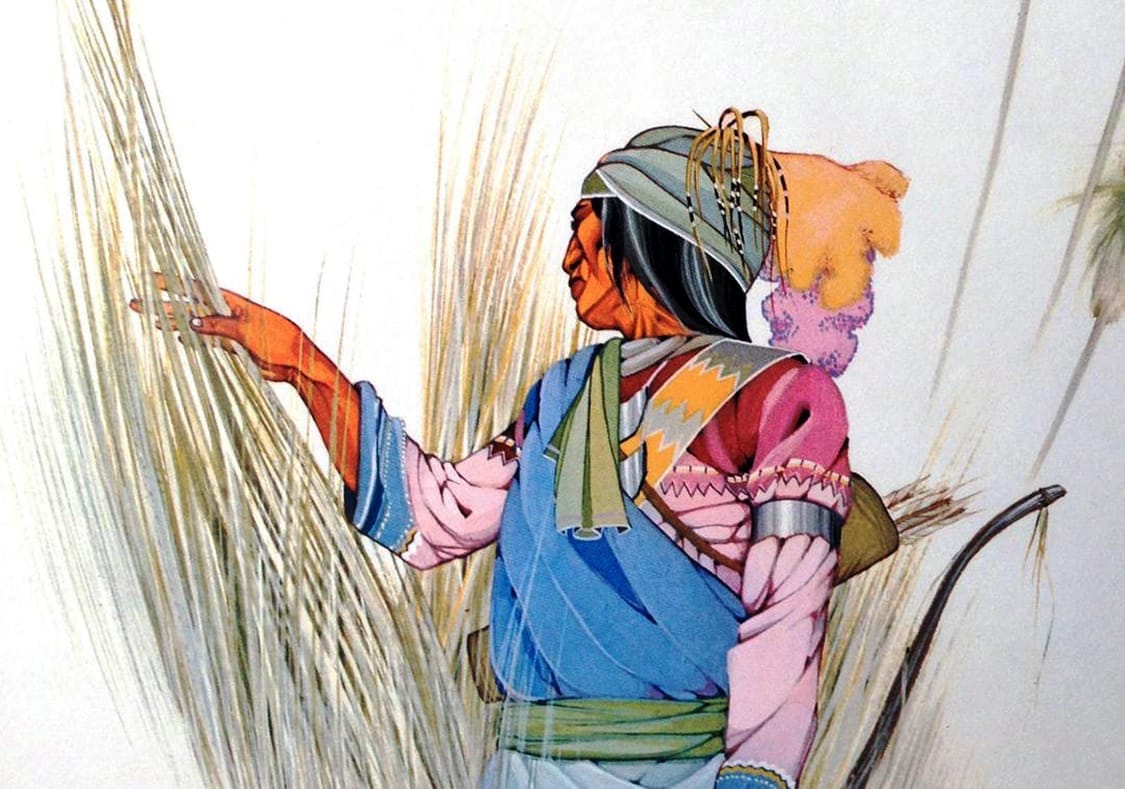
The first thing that struck me about the Jerome Richard Tiger exhibition at the Mid-America All-Indian Museum was the need to walk closer.
Tiger was a Creek-Seminole artist born in Oklahoma in 1941 and had a short career, which is widely acknowledged as prolific. He worked predominantly with paint on paperboard and left large amounts of the paper blank in a minimalist style, but the sections his brush did touch are full of understated mastery. Much of his work depicts Indigenous people in a way that feels timeless yet accessible, intimate yet dignified, and at times otherworldly. The exhibition contains seven of his pieces, all of which are fine ambassadors of his talent and ability.
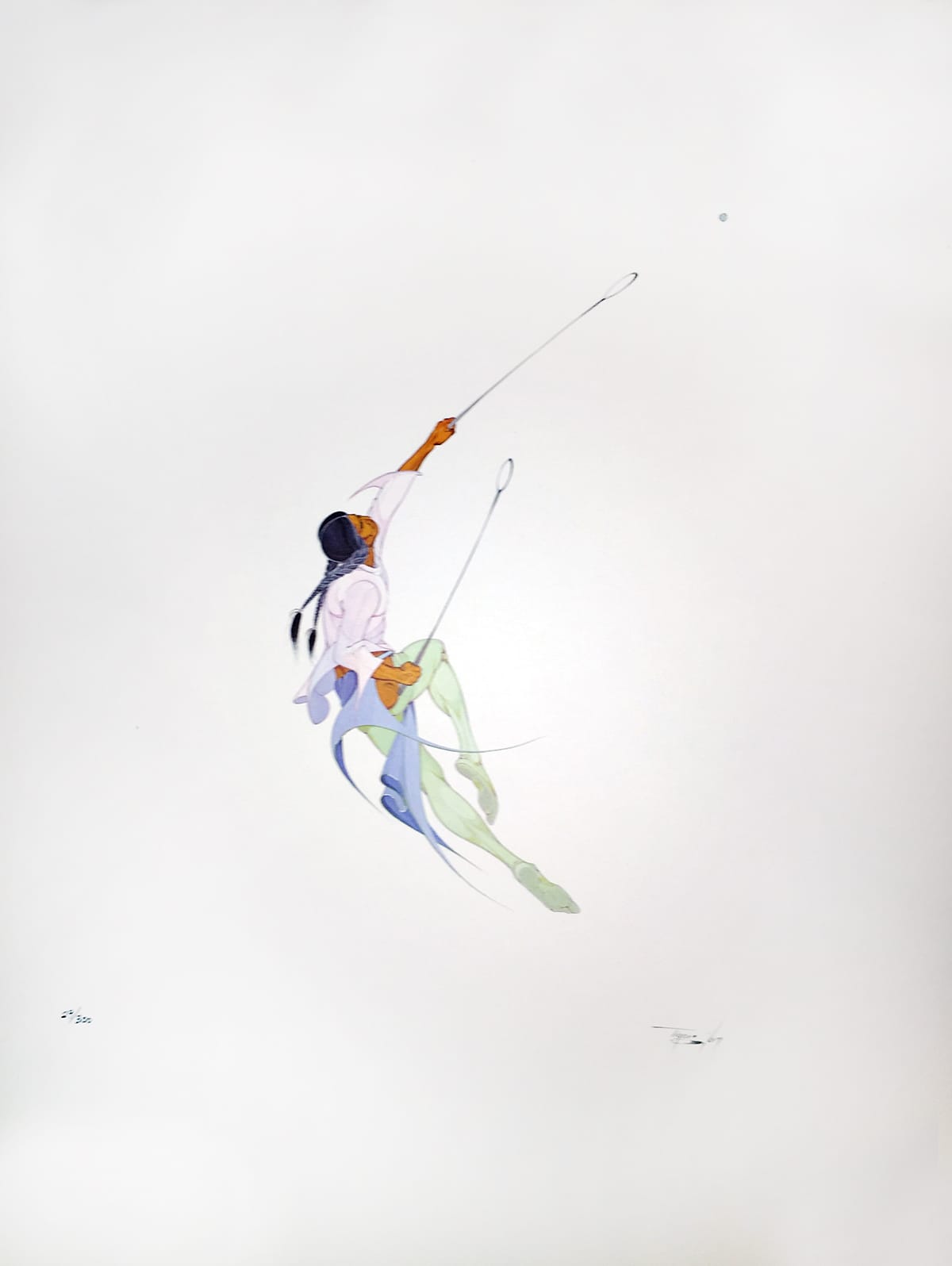
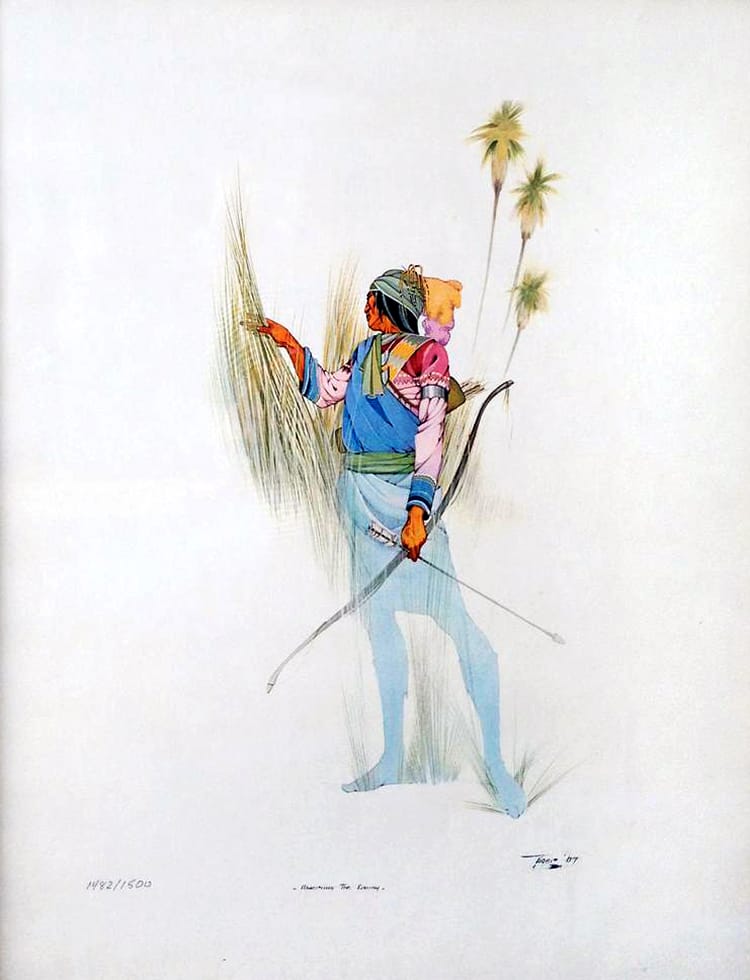
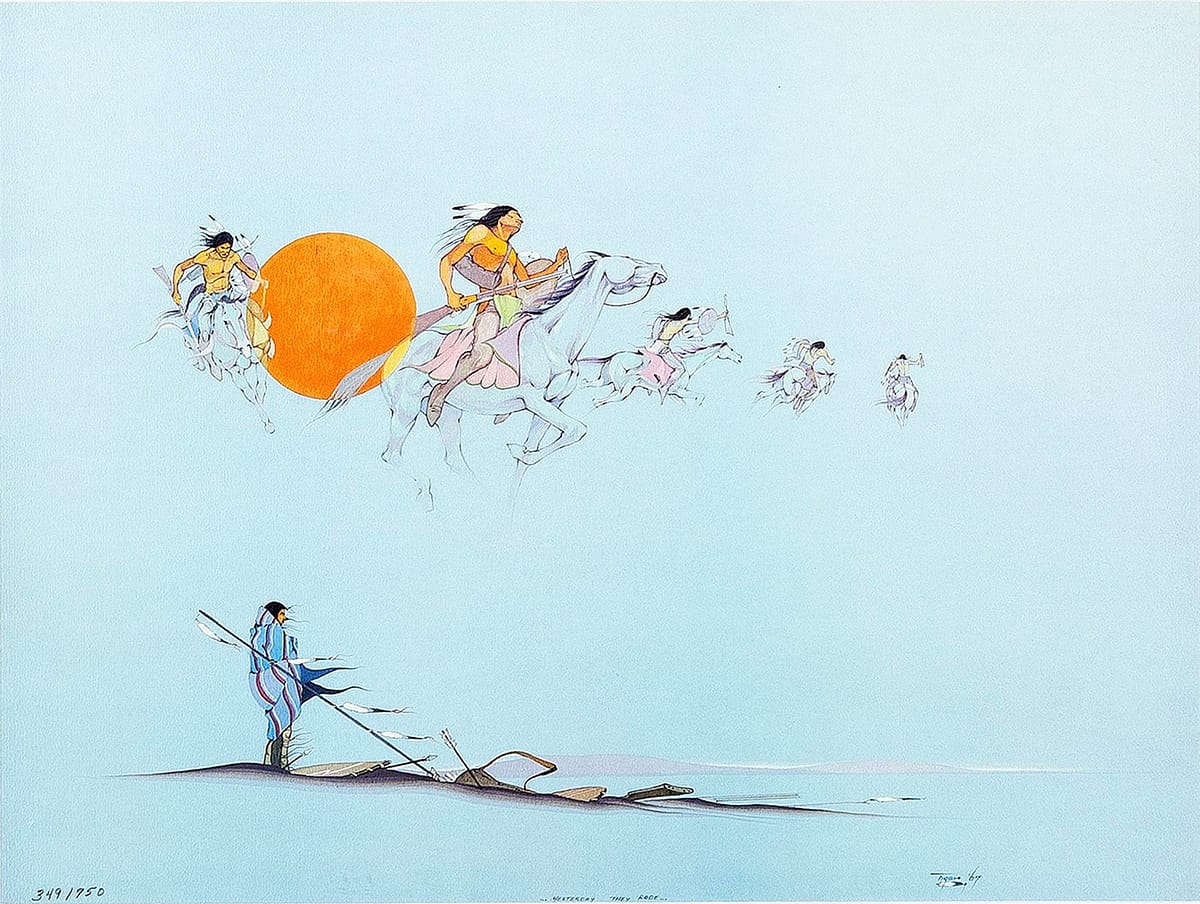
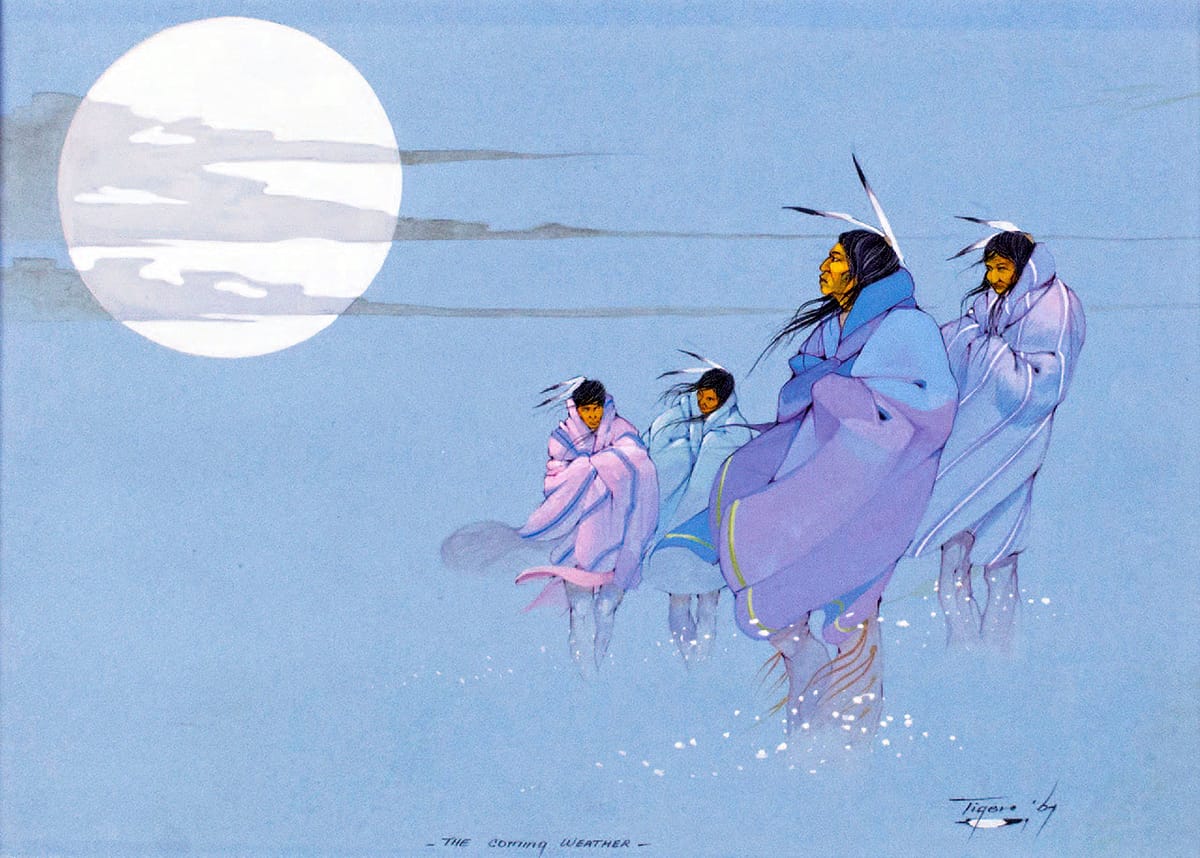
Works by Jerome Tiger, from top left: "Mighty Stickballer;" "Observing The Enemy," 1967; "Yesterday They Rode," 1967, paperboard and casein paint; "The Coming Weather," 1967
Tiger was clearly not one to waste brushstrokes, and each outline, shape, color choice, and expression speaks to his confidence and precision. He understood his subjects and was familiar with them. Granted, that may also be the result of each print being one in a series of 300-1,800, which answered the question I had about whether an exhibit with seven pieces really evoked the label “prolific.”
Our free email newsletter is like having a friend who always knows what's happening
Get the scoop on Wichita’s arts & culture scene: events, news, artist opportunities, and more. Free, weekly & worth your while.
No spam. Unsubscribe anytime.
His career lasted only five years, but in that time Jerome Tiger became quite popular and produced a large amount of work. According to the Oklahoma Historical Society website, during one eventful show at the Philbrook Art Museum, he was said to have replaced paintings that sold out at least twice. At age 26, he lost his life in a tragic firearm accident.
Perhaps this fact is reflected in the poignancy of his work, which often tiptoes between this life and the next. In the print “A Walk Through Great Mysteries,” nine figures are moving away from the viewer while a red sun hangs low in the sky. The figures, huddled in blankets and walking in groups, move through the piece at a diagonal, following an invisible trail up past the sun and growing fainter as they do so.
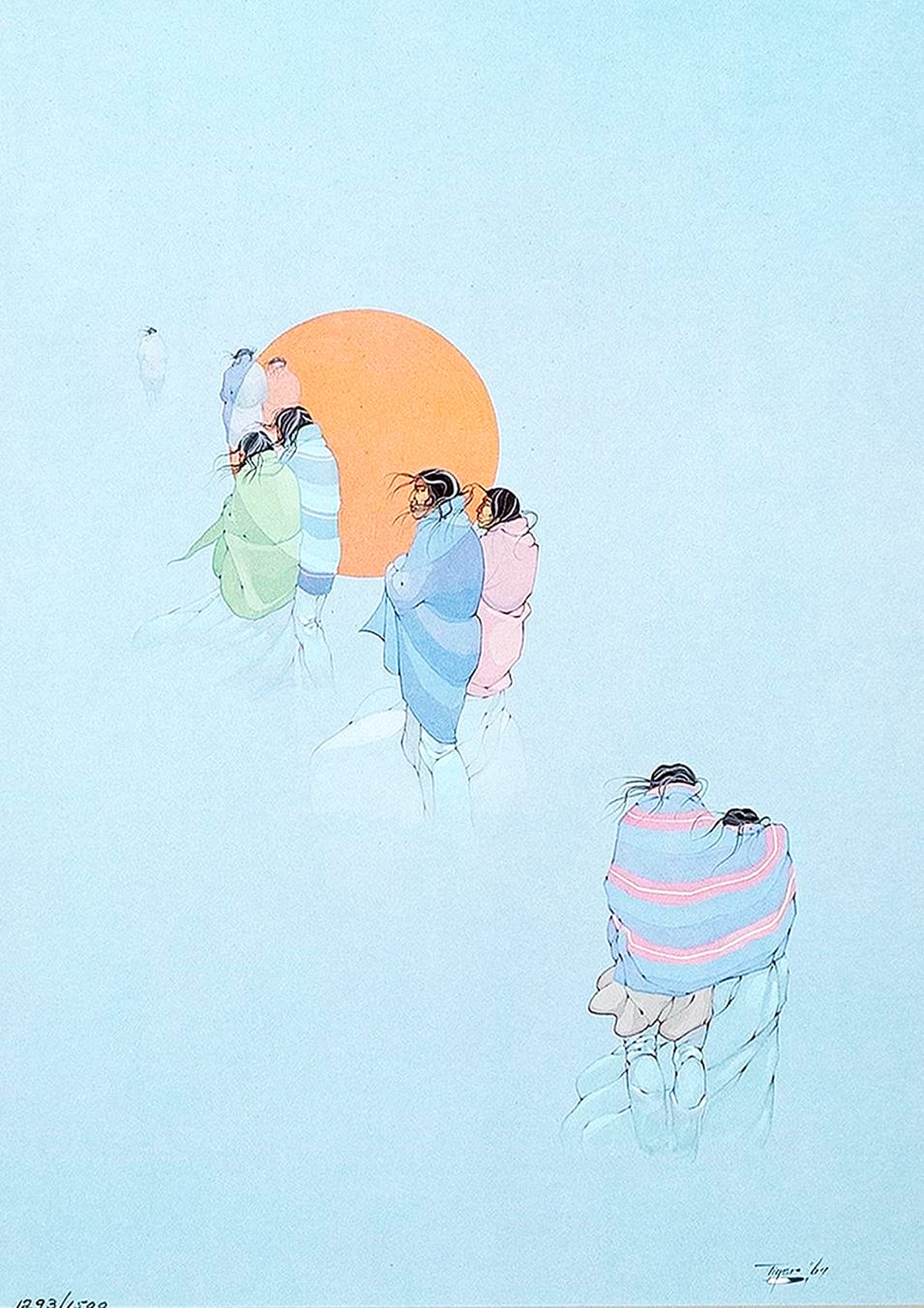
However, due to Tiger’s minimalist style, they do not appear to be walking toward anything. The play between the faint and the definite, from the figures themselves to their clothing to the barely discernible rock at one group’s feet, speaks to the intangibility of the soul’s journey in a way that makes no declarations or exclusions.
One of the hallmarks of Tiger’s work is the grace of movement of his subjects, from the long wisps of hair floating in the wind to the lithe bodies and the forms they take. It reminds me of Japanese Ukiyo-e style, in which the focus is on the figures, including their actions and clothing, and the background is almost nonexistent. Tiger’s approach evokes whimsy and spirituality in a way that celebrates transcendence and the unique beauty of conscious being.
This very topic is the subject of “Into Another Life,” which shows a man lying dead in the snow next to his horse near the bottom of the painting, and the same man being guided away by an ethereal figure. The snow, the horse, and the guide are precise but bare outlines, already fading away at the edges, while the man is clearly detailed and distinct. The emphasis is on the permanence of the self as opposed to the material world.
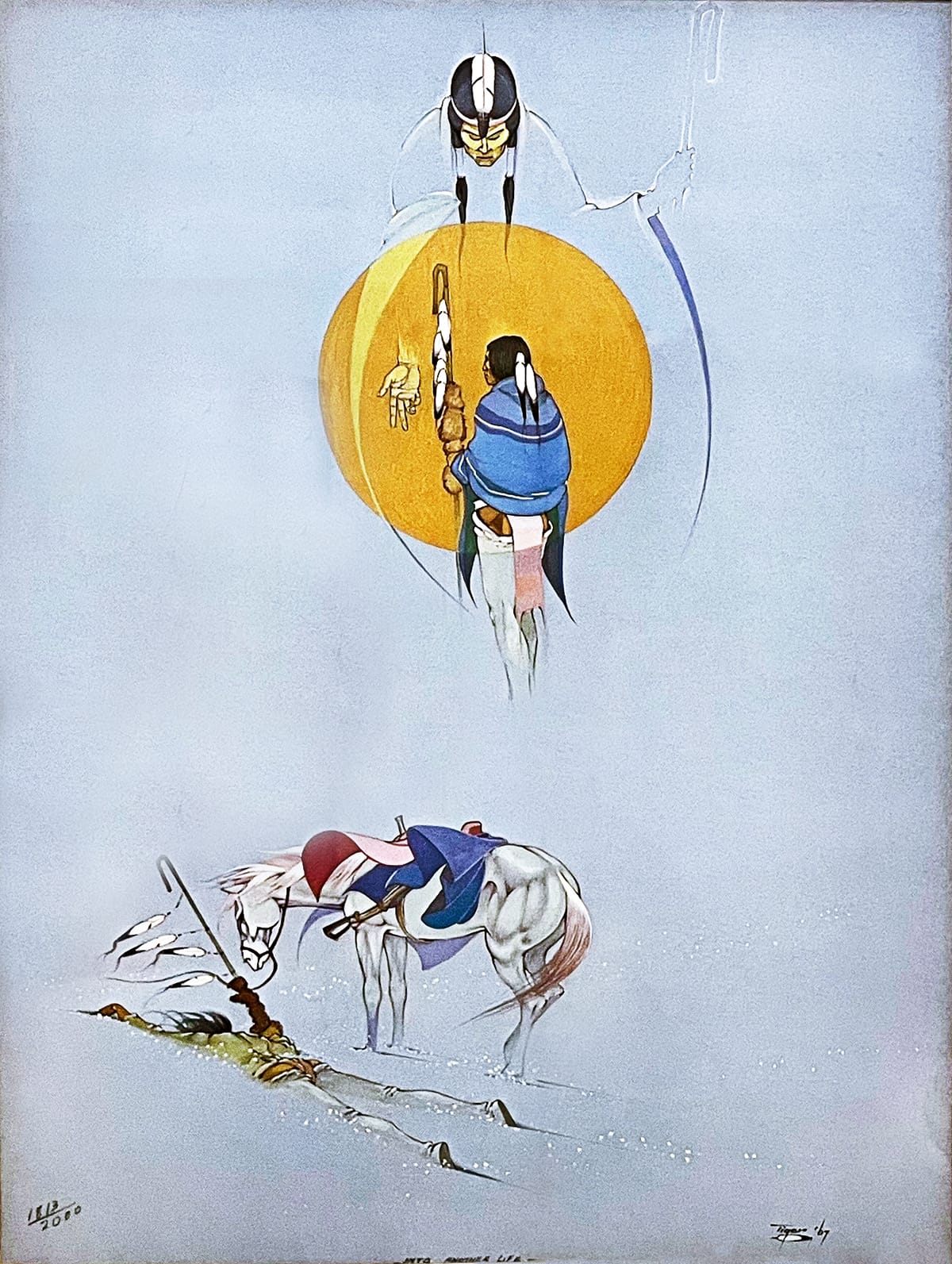
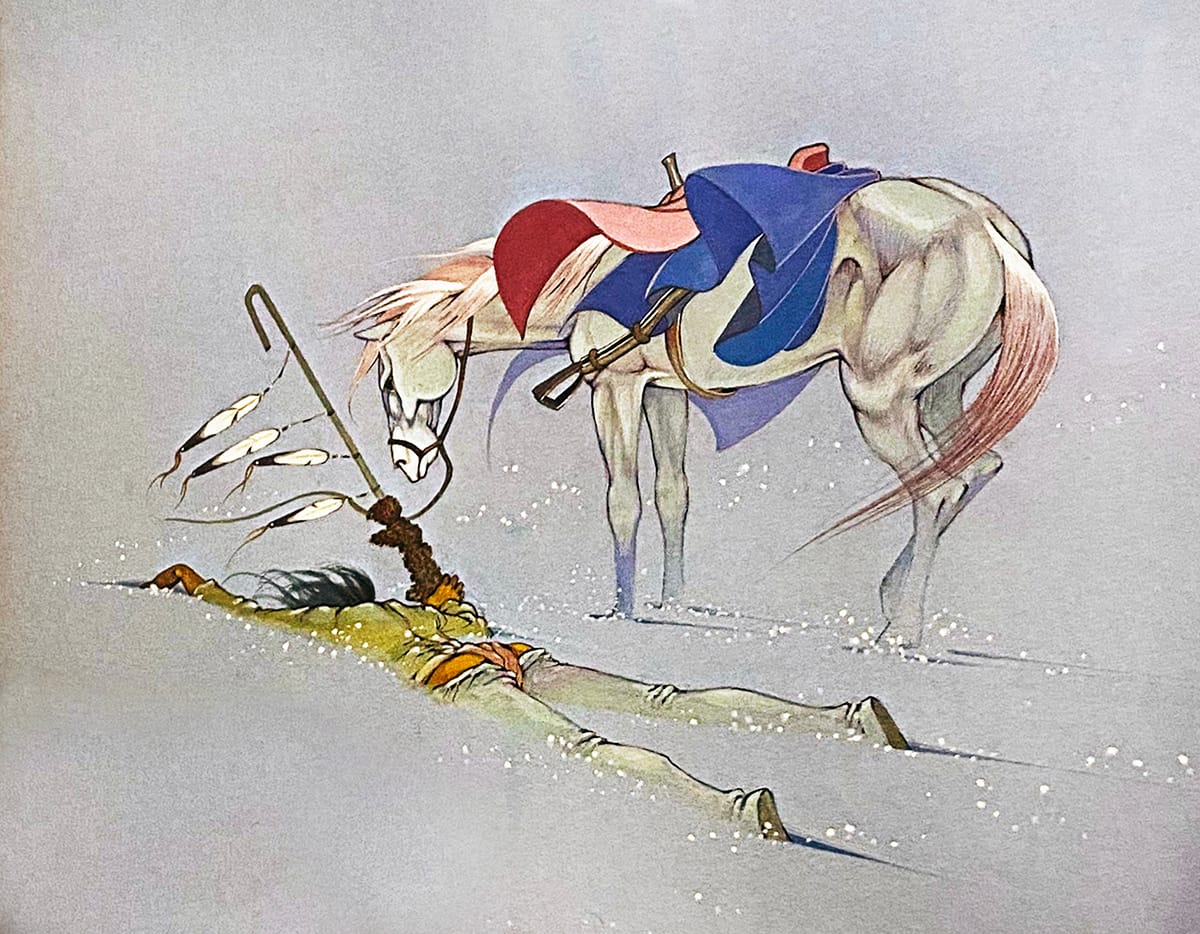
Jerome Tiger, "Into Another Life," 1967
Tiger was a unique artist who managed to convey great meaning through brief, multilayered works. While the paintings and prints themselves are certainly worth the trip, I found myself wanting more information on not only the individual pieces, but Jerome Tiger himself. All of the works were marked with their number in that series, but only a few carried a title that Tiger had handwritten on the bottom.
Additionally, the only information about Tiger came from a sign that meets you at the beginning of the exhibit, which summarized his death and mentioned some facts of his career and his work. I will say this, however: visiting the exhibition made me curious enough to do more research on my own. Tiger’s works are well worth seeing in person, and you should certainly give yourself the chance to look at his paintings and prints up close
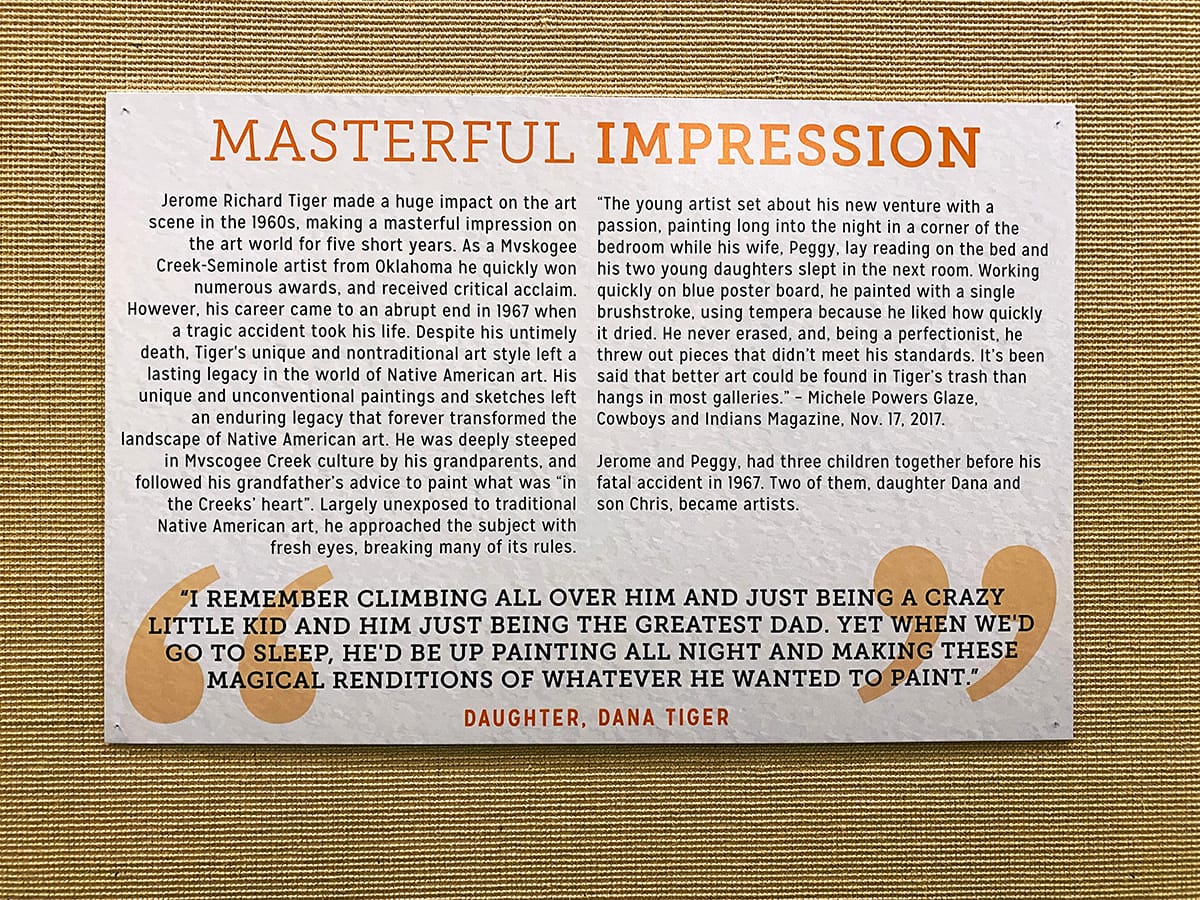
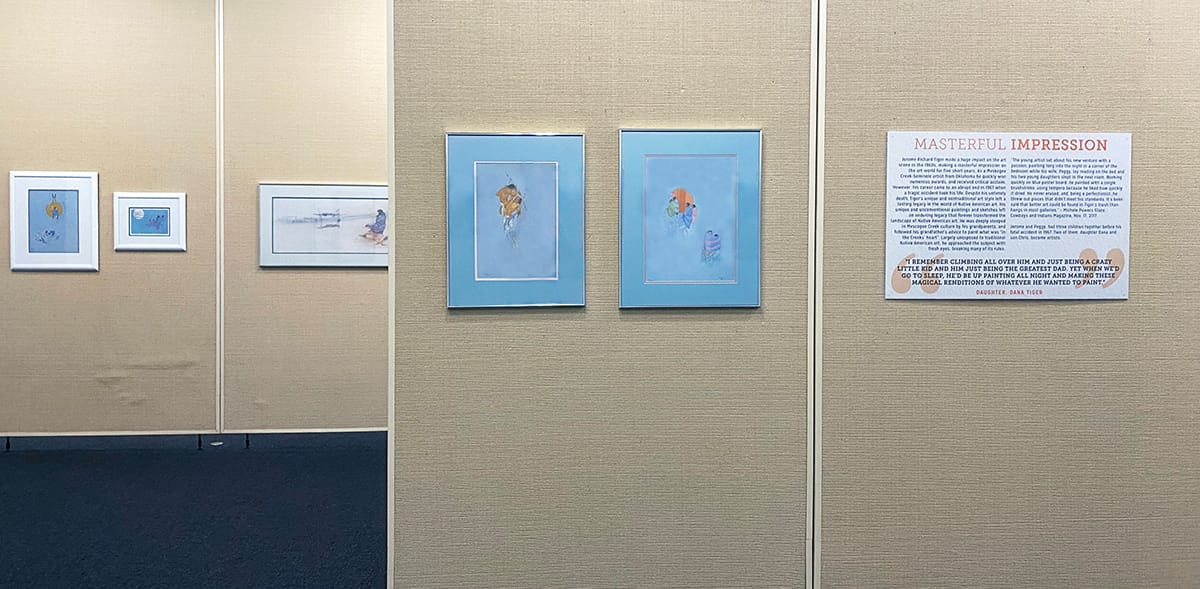
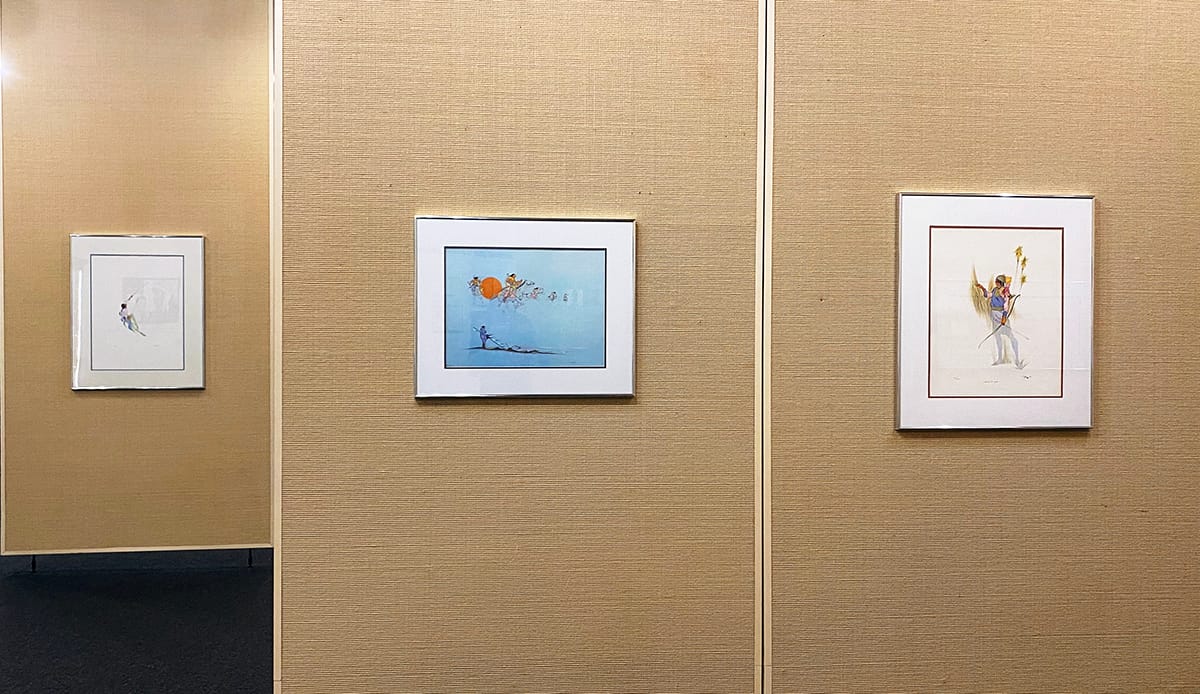
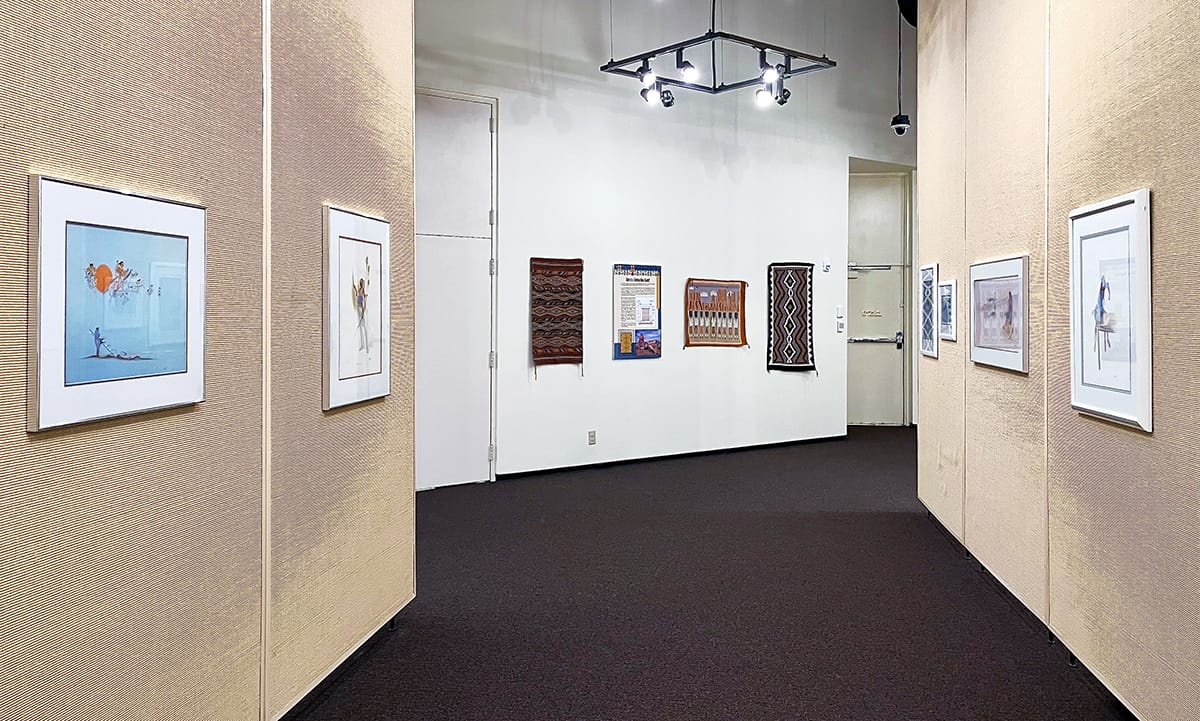
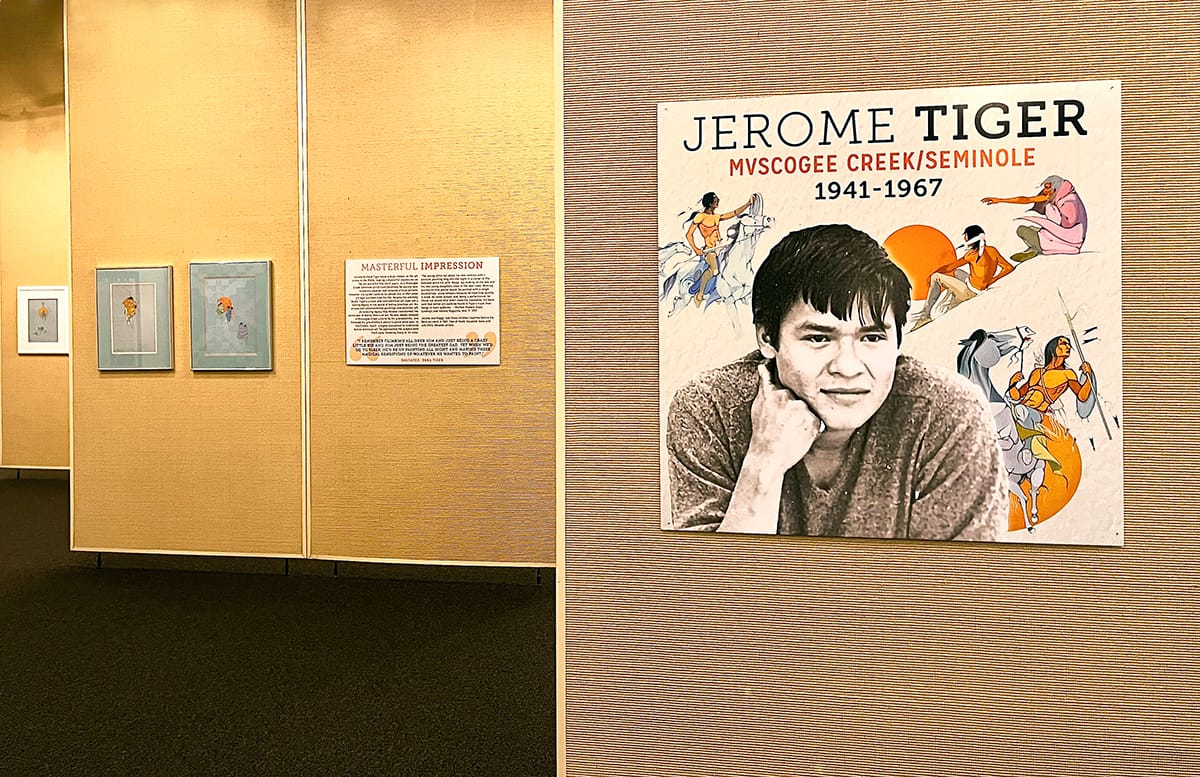
Installation images of Jerome Tiger's work at the Mid-America All-Indian Museum.
The Details
The Mid-America All-Indian Museum presents works by Jerome Tiger
June 29-November 2024 at the Mid-America All-Indian Museum, 650 N. Seneca St. in Wichita
MAAIM is open from 10 a.m.-4 p.m. Tuesday-Saturday.
$7 adult admission; discounts are available.
Samantha Barrett is an author, fiber artist, nature photographer, and occasional poet. In addition to her short story collection, "The Bus to Adventure City," her work has appeared in Crack the Spine, The Chaffey Review, and GeekSmash.com, and has been anthologized in multiple publications from Air & Nothingness Press and Carlow University Press. She is the assistant director of adult programs for Write Pittsburgh and a member of the Kansas Authors Club.
Support Kansas arts writing
The SHOUT is a Wichita-based independent newsroom focused on artists living and working in Kansas. We're partly supported by the generosity of our readers, and every dollar we receive goes directly into the pocket of a contributing writer, editor, or photographer. Click here to support our work with a tax-deductible donation.
❋ Derby man has the kind of voice that turns heads — and chairs
❋ Socializing while sober: how some Wichitans are cultivating alcohol-free communities
❋ As a small creative business closes, the owner mourns
❋ Painting through it: Autumn Noire on 20 years of making art
❋ How a guy from Wichita resurrected 'Dawn of the Dead'
❋ Bygone Friends University museum housed curious collections
More visual art coverage from the SHOUT
 The SHOUTConnie Kachel White
The SHOUTConnie Kachel White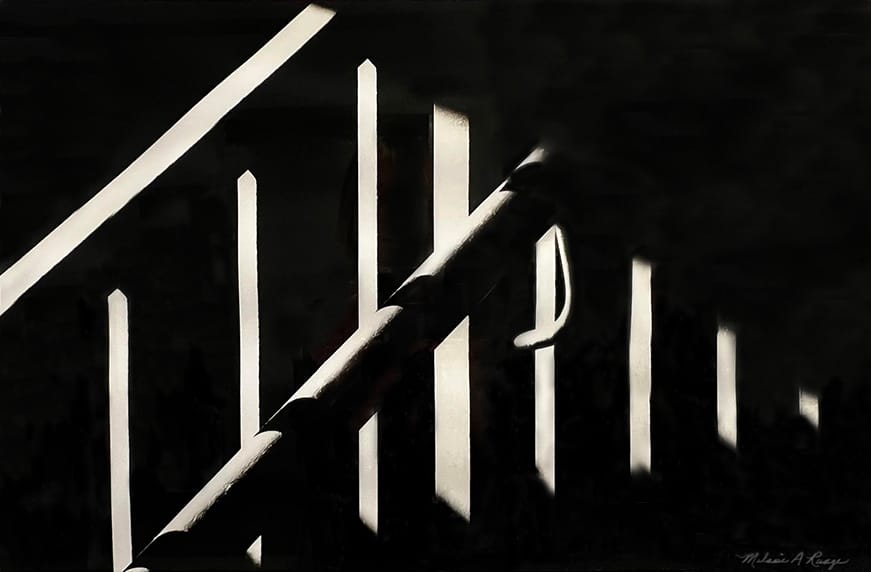
 The SHOUTJeromiah Taylor
The SHOUTJeromiah Taylor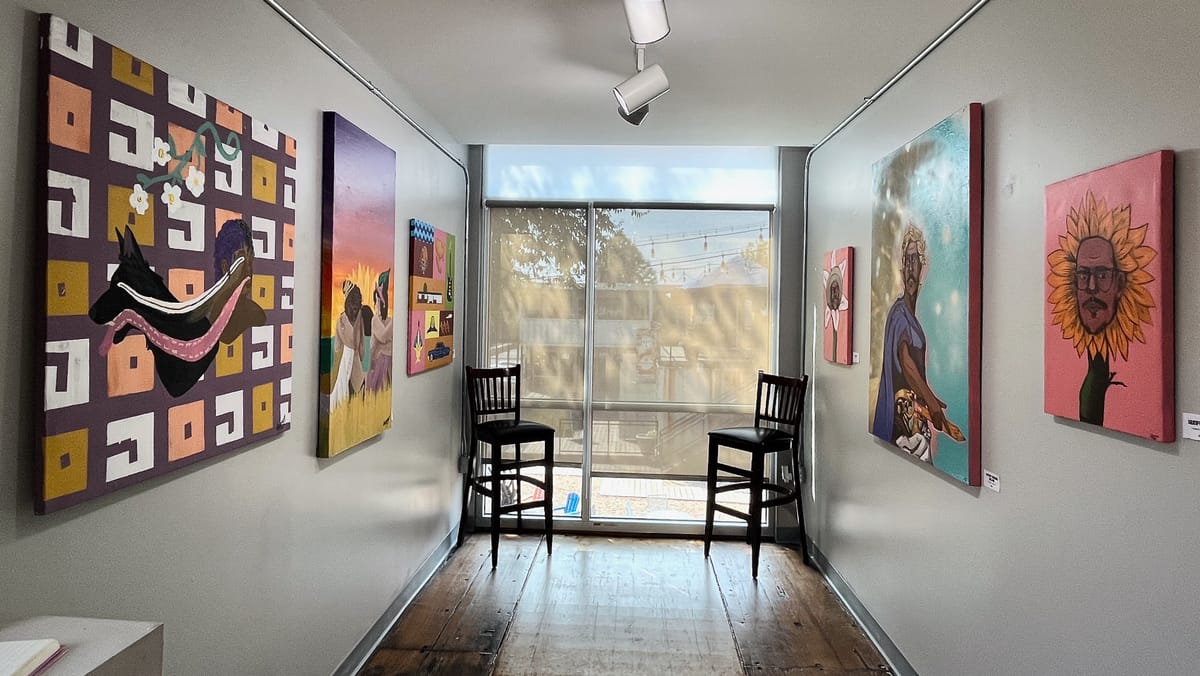
 The SHOUTLori Brack
The SHOUTLori Brack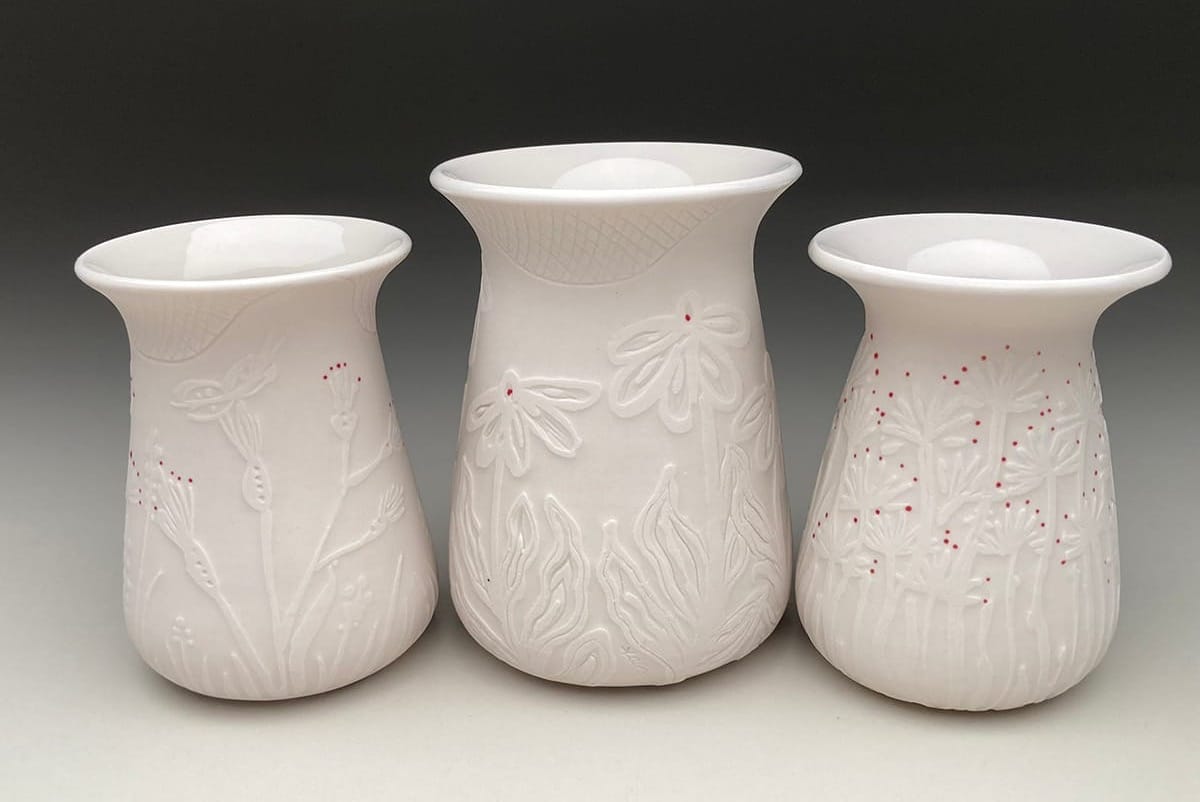
 The SHOUTEmily Christensen
The SHOUTEmily Christensen